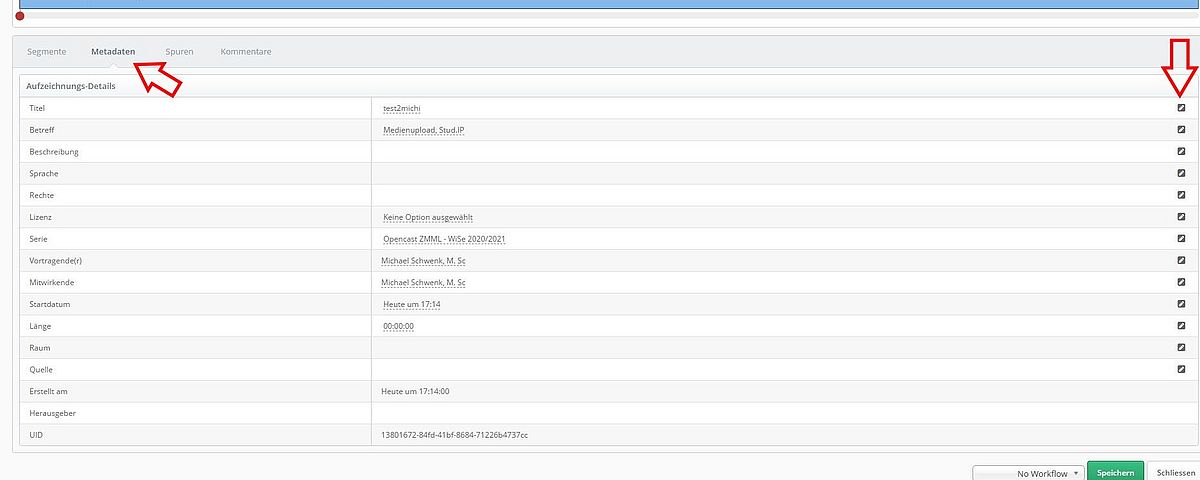Opencast editor
The Opencast Editor can be accessed via the Opencast Stud.IP Plugin. The editor offers you the possibility to edit your videos easily and quickly. The functions available to you are described below:
Note: Changes do not apply to the published video until you save them with the "studip publish" workflow! (See 5. workflow)
1. cutting/splitting into segments
The function "Split" splits the video at the position of the red cursor. Alternatively, the scissors symbol on the cursor can be used directly.
"Delete segment", i.e. the X, cancels the division at this point.
"Hide segment", i.e. the eye symbol, hides the corresponding segment in the video. It is then "cut out" of the video that is finally played, but it still exists in the edit and can be faded in again.
2. change metadata
Here you can edit the metadata of the video, for example, you can change the title of the video.
3. manage tracks
Here you can see the different tracks, for example your presentation and the recording of yourself, and you can show/hide them or mute the sound tracks of the individual tracks by clicking on them.
4. comments
Here you can leave comments on the videos if an error occurs or you need help. A comment corresponds to a support ticket to the ZMML and will be processed by us. Select the reason for the comment in the drop-down menu.
5. workflows
If saved with "No Workflow", the changes will not be applied to the published video in Stud.IP.
For this to happen, the workflow "studip publish" must be used. The window that opens after saving can simply be closed again and is only an expression of the fact that the processing has started. Afterwards, you will see in the Stud.IP overview that the video is again being processed as you know it from the initial publication.
Only when processing is complete the changes are visible in the published video.
Note: Changes do not apply to the published video until you save them with the "studip publish" workflow! (See 5. workflow)






